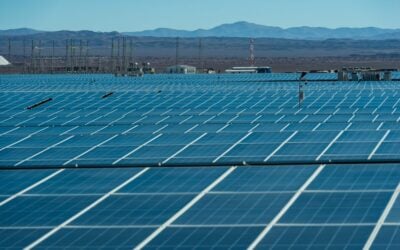
Eskom, the state-owned electricity utility of South Africa, has begun tendering for a battery energy storage system (BESS) of minimum size and capacity 80MW / 320MWh.
The utility issued a procurement notice at the end of July requesting bids for the Eskom Investment Support Project and Eskom Renewables Support Project. The twin project calls for interested parties to design, engineer, supply, construct, test and commission a battery energy storage system “with a minimum of 80MW / 320MWh usable capacity”.
The winning bidder will also be responsible for providing five years of operations and maintenance (O&M) services for the project, to be built at Skaapvlei Substation, in the town of Vredendal in the Republic of South Africa’s Western Cape province.
Eskom would like the development process to be complete within nine months for the project, for which the utility has received financing from the World Bank, African Development Bank and New Development Bank. Funds received will be used directly to pay for the BESS’ deployment.
Try Premium for just $1
- Full premium access for the first month at only $1
- Converts to an annual rate after 30 days unless cancelled
- Cancel anytime during the trial period
Premium Benefits
- Expert industry analysis and interviews
- Digital access to PV Tech Power journal
- Exclusive event discounts
Or get the full Premium subscription right away
Or continue reading this article for free
Sealed bids are being invited, with Eskom using international competitive procurement processes using Request for Bids – this is in line with World Bank requirements for borrowing funding. The Skaapvlei substation is near the 100MW grid-connected Sere Wind Farm and an initial site meeting is being held at that wind farm on 20 August. The bidding process closes in September.
The project looks to be an important step towards Eskom meeting a 1,400MWh energy storage target set out by the utility in a 2018 long-term resource plan to add system reliability as well as integrate renewable energy facilities onto the grid.





